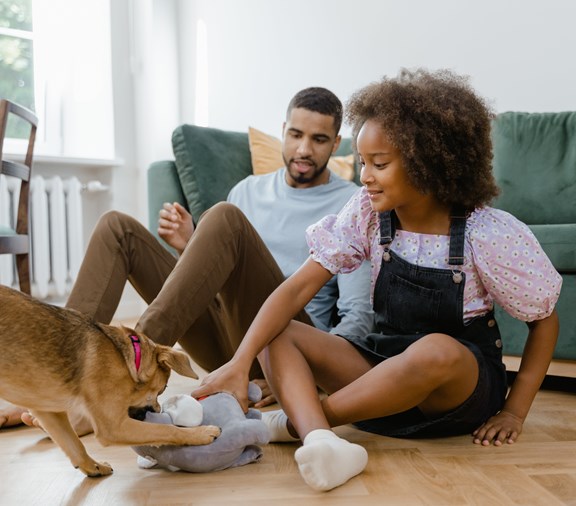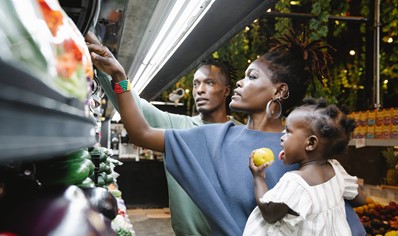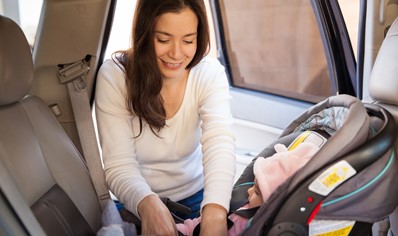
A Pediatrician Explains: What Parents Need to Know About Animal and Pet Safety
December 28, 2023
Most children are drawn to animals. As soon as they can walk, children try to pet, play with and feed treats to the family dog, the neighborhood cat, wildlife or pets owned by friends.
Unfortunately, animals can—and often do—bite. Even if the wound seems small, it can become seriously infected.
What can parents to do help their children stay safe around dogs, cats and other animals? What should parents do if their child is bitten, scratched, or injured in some other way?
Get answers by reading this helpful Q&A with Dr. Mary Strength, a pediatrician in north Texas.
What should parents can teach their children about playing safely with pets?
Animals can be unpredictable. Most will avoid humans if they do not want to interact. Others may bite or scratch, but only in certain situations.
Even friendly pets will bite if they are ill, in pain or in emotional distress. Others will jump, growl, bite, or scratch when they have become too “amped up” during excited play. Children should not roughhouse with or tease pets for this reason.
Parents should teach their children to leave pets and other animals alone when the setting is more risky. This includes avoiding animals when they:
- Are eating
- Are sleeping
- Are caring for their young, such as puppies or kittens
- Belong to someone else. Ask permission first.
How can children stay safe around dogs or cats they don’t know?
Children will encounter pets—with and without owners—in parks, at events, at restaurants and even while walking through the neighborhood.
Young children may be excited to see these pets, but they should not be allowed to run toward or otherwise approach them. Children should not pet or touch strange dogs or cats, even if they seem friendly.
What if the animal runs toward the child?
In this situation, children should:
- Stay calm.
- Not run away. Running away often causes the dog to chase.
- Stand very still. Usually, the dog will sniff a few times, become bored and walk away.
- After a few minutes, walk away very slowly, looking straight ahead and not into the dog's eyes.
If children are very afraid of a strange dog, or if a strange dog tries to bite or attack them, they should tell an adult right away.
How do I treat animal bites and scratches?
When dogs, cats and other animals bite hard enough to tear the skin, the victim should get medical help immediately. Animals can pass diseases to humans though open wounds, and bites can become infected.
If you know the owner, ask when the animal had their most recent vaccines. This is important information for your child’s doctor to know.
When a wild animal, such as a skunk or racoon, bites a human, consider it an emergency. These animals are more likely to have an infection or have rabies.
If you child was bitten or scratched on their face, hand or foot, they are at higher risk for infection. Take your child to the doctor as soon as possible.
Remember: The sooner a doctor looks at the injury, the less likely it will result in an infection.
If the bite or scratch is bleeding:
- Apply pressure to the area with a clean bandage or towel until the bleeding stops.
- If possible, wear clean latex or rubber gloves.
If the wound is not bleeding heavily:
- Clean it with soap and water.
- Hold it under running water for several minutes.
- Dry the wound.
- Apply antibiotic ointment.
- Cover it with sterile gauze or bandage.
Call the doctor if:
- The animal was young or a baby. Their bites are more likely to become infected. .
- The bite or scratch injury broke the skin.
- The child may need antibiotics or a tetanus booster.
- The animal might have or be a carrier for rabies.
- An unfamiliar or wild animal bit or scratched your child.
Get medical care for animal bites and scratches immediately if:
- The animal was stray, wild or behaving strangely.
- The injury is on the face, neck, hand, foot or near a joint.
- The wound won't stop bleeding after 10 minutes of direct pressure.
- The wound is deep or large.
- The bite or scratch has pus coming from it.
- The wound is red, hot, swollen, or increasingly painful.
- Your child has a weak immune system or other medical condition that might make an infection more likely.
- Your child's tetanus immunizations are not up to date.
Animals and pets can bring a lot of fun and companionship. Follow these safety habits to help keep everyone, including the animals, safe.


